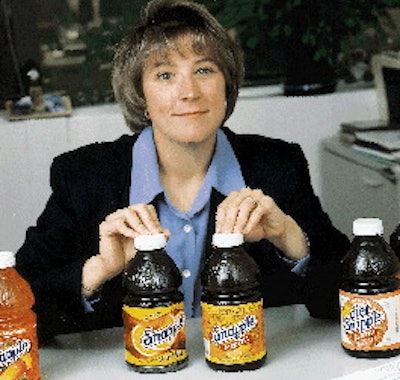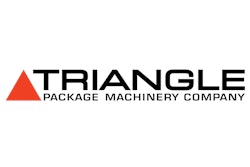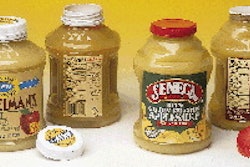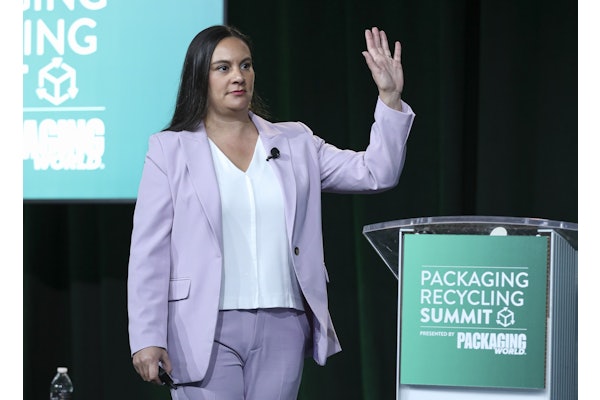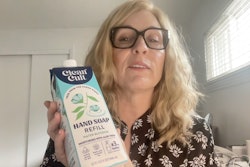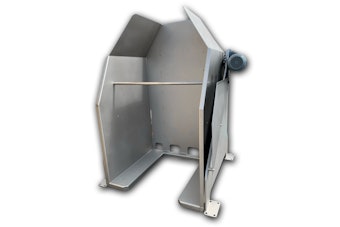Ever since downsizing of packaging departments became popular in the early '90s, conventional wisdom has held that there are fewer and fewer positions for packaging professionals at manufacturing companies. Outsourcing, the thinking goes, has made it less essential to keep packaging talent in-house. If there are fewer packaging positions, then there must be a lot of talented people looking for work. So Paul Russell, corporate packaging program manager at Hewlett-Packard, Palo Alto, CA, wants to know one thing: Where are they? "Every time we've had an opening it's been very difficult to find qualified packaging engineers," says Russell. "There are just not that many out there." Bruce Cohen, director of packaging technology for drug maker Glaxo Wellcome, Research Triangle Park, NC, agrees. "It has gotten tighter," says Cohen. "I'm now in the market [for packaging professionals] after being out for a while, and we're not finding as many qualified people for our industry." Echoing Russell and Cohen is Coopers & Lybrand's "Trendsetter Barometer," released June 18 and based on interviews of CEOs at 446 of the fastest-growing U.S. product and service companies. Nearly 70% of CEOs interviewed indicated that a shortage of skilled, trained workers is the number one barrier to growth over the next 12 months. The phenomenon isn't necessarily limited to the U.S., either. "Getting good people in packaging in the United Kingdom is like looking for a needle in a haystack, from operators on a bottling line to a packaging director," sighs Bill Dando, director of package development for Bass Brewers of Burton-on-Trent, England. He explains that in the '70s and '80s, "every corner possible was being cut, and generally the first cuts were people." When the economy picked up again, "The people you needed to build your business weren't there. What I think has happened is we've come to understand that packaging is no longer an afterthought. People appreciate the impact packaging has on sales. So there's a groundswell of investment in packaging development." Hence, a shortage of people to fill those positions. What about recruiting engineers without packaging experience and training them? For Hershey Foods, Hershey, PA, even that strategy is being thwarted by today's tight market. "Our approach over the last two years has been to seek out less experienced individuals who have degrees in either mechanical engineering, manufacturing technology or maybe electrical engineering. Then, we train and develop them into what we need for the type of work done here at Hershey," says Wade Latz, Hershey's manager of packaging systems engineering. "Over the past two years, we've had to hire about eight of these people. During that time, my experience was that the market was extremely tight." The scarcity of qualified packaging personnel isn't restricted to engineers in white lab coats, either. "It's very difficult to get operators for packaging," says Janice Rooney, director of human resources and financial services at Torpharm, a generic drug manufacturer in Toronto, Canada. Adds Torpharm's David Mackay, manager of packaging machinery installation and maintenance, "With all the computerization here, we can't hire people who just stand around." If you're going to work on a packaging line at Torpharm, he adds, you'd better not check your brain at the door. Indeed, many companies have raised the bar on the skills they look for in a packaging professional, making it even harder to find the right person. That's the case at White Plains, NY-based Triarc Beverage Group, the progressive beverage marketer behind the remake of Snapple. "It's very difficult to find someone who knows not only how to design for different package types, but also how to build the artwork to print across a variety of different substrates," says Mary Ellen Reis, Triarc's director of packaging. "And on top of that, how to schedule, how to process work, from going from design to production to printing to filling to shipping." For those packaging professionals who are in the process of upgrading their skills, they can't help but benefit from being viewed favorably by employers that are demanding highly skilled people, even in a tight market. Matt Daum, a packaging engineer at Hewlett-Packard's Boise, ID, facility that performs product and packaging R&D for the company's LaserJet printers, is a good example. Hewlett-Packard is partially funding Daum's education at Michigan State University, East Lansing, where he's wrapping up work on a packaging Ph.D. While Daum admits the Ph.D. isn't technically required for his current job, both he and his company have agreed that such an education can be of long-term value to HP. "It will allow me to do some research in some areas that I think might be strategic for us down the road in terms of product damage and how things fail," says Daum. Plus, the Ph.D. will help Daum "branch out into product design, not just packaging," he adds. Not tight everywhere To be fair, a few packagers Packaging World spoke with didn't feel there was any tightness in the market. "We have absolutely no difficulty hiring any packaging people," says Jeff Waalkes, a spokesperson for Miller Brewing. "And we have nationwide locations, so it's not a regional thing. Our jobs have such good pay and benefits, we have almost zero turnover in packaging jobs." But comments like these were the exception. By and large, even the search firms we contacted, like Pack Staff in Oostburg, WI, told pretty much the same story. As Pack Staff's Walt Ellis put it, "The difficult thing about my job is finding good candidates, not finding job orders." Which brings us back to Paul Russell at Hewlett-Packard and the question he'd like answered: What happened to all those packaging engineers who were downsized? A partial answer is that some of them were scooped up by other firms. That's what recently happened to Susie Burleigh and Dee Bessey, formerly packaging engineers with the IBM Microelectronics Div. That division sold its manufacturing assets located in the company's Charlotte, NC, facility, that made and packaged memory chips and circuit boards as well as point-of-sale terminals and related hardware. However, the two separate companies that purchased those assets-Manufacturers Services Ltd., Concord, MA, and Solectron Technology, Milpitas, CA-had no packaging engineers on staff prior to the purchase. "They specifically looked at the list of employees and chose the packaging engineering skill to be part of the transfer," says Bessey. Burleigh now works at MSL and Bessey's at Solectron. Known for its progressive packaging department, Dean Foods of Franklin Park, IL, also nabbed some of the talent that became available as others downsized. "We got some good engineers out of that downturn," says Dean's Gary Flickinger, vice president of production and engineering. Triarc's Reis turns the downsizing notion on its head and argues that long term, the trend actually results in fewer packaging people to choose from, not more: "More companies are eliminating packaging departments and farming out [the work]. That creates a shortage of employees who have a 'good history' of a brand. That's becoming a real issue because people are moving around a lot, and companies are being bought and sold." What does it mean? Increasingly, this means that packaging engineers are becoming less bashful about what they want, who they'll work for and how much they expect to be paid. "The engineers that I recruit are a lot more demanding about where they want to work," says recruiter Ellis. "It's not a situation where people jump at opportunities as much as it is 'Are the opportunities where I want them to be?'" "Today, candidates are more often seeking career security versus job security," says recruiter Walter Phillips, owner of Phillips Intl., Greenville, SC, which partially specializes in recruiting for packaging positions. "They realize there is little job security today. So they must keep their own personal skills on the leading edge to remain readily marketable when companies change direction," says Phillips. A tight market also means that candidates are much pickier about the kinds of assignments they'll take. "It's definitely more difficult finding good candidates for openings today because the good candidates typically tend to keep their feet more planted in this labor market," says Joe Borci, of Joseph Borci Associates, Port Charlotte, FL, who places packaging engineers with suppliers of packaging machinery and materials. "As recently as three years ago, for example, relocation was not a big deal. Now it's more of a deal killer." Also, engineers expect to come into a job at higher levels. "If you can find people who are relatively new, say with three to four years' experience, that's terrific," says Angelo Scolieri, director, packaging and production technical services, worldwide pharmaceuticals, for SmithKline Beecham, Philadelphia, PA. "Beyond that, what you find is that they're looking for the higher-level managerial position [as opposed to] coming in as a packaging engineer or senior packaging engineer." This thought is echoed by Mike Mulshine, who runs The Mulshine Co., a search firm in Queensbury, NY, that specializes in packaging, engineering and R&D recruiting. "There are a lot of very talented packaging professionals out there with seven to ten years' experience. Historically that's been considered too little experience to qualify for promotion into senior management," says Mulshine. "But in today's climate, these people are in real demand. To stay, they have to be paid very well, they must be made aware of career prospects within the company, and they must be promoted within a reasonable time frame." The tight market even affects companies that recruit heavily from college campuses, such as Cincinnati, OH-based Procter & Gamble. "Five years ago, people close to graduating may have had two or three job offers," says George Vernon, director, research & development, corporate prototyping and package development. "What we're seeing now is that a growing number of the students are finishing up with anywhere from four to six and sometimes more job offers." Salaries are up There's also evidence that salaries are up briskly, even for entry-level positions. "The average Michigan State University graduate is commanding about thirty-seven to forty thousand dollars just out of school," says recruiter Ellis. And it's not just about salary. "Certainly the men and women coming out of school today are more savvy than I was," Ellis says. "They're asking about 401(k) programs, matching contributions, etc. Those are very important things to these people." The dearth of good candidates also means that when there is an opening, it will take longer to fill. "Normally, it takes thirty to sixty days [to fill a position]," says recruiter Borci. "Today, a lot of these jobs are taking longer than sixty days." Recruiter Phillips concurs. "We are working longer and harder to find people now than anytime in our last fifteen years in business," he says. And don't expect to be able to choose from a wide field of recruiter-screened candidates, says Ellis. Be lucky if you get two or three. "And as soon as you find somebody that fits the bill, you better take them," Ellis says. "Companies' slow response time is usually the biggest stumbling block in the search process," agrees Phillips. "They need to shorten the hiring process and response time if they are going to compete in today's labor market." At the operator level, the shortage of qualified personnel has allowed at least one packager to help justify the investment in more automated packaging equipment. "Our yogurt business is growing a little faster than the market in general," says John Daigle, vice president of operations at Stoneyfield Dairy, Londonderry, NH. "And the firm has coped with growth by adding new equipment and systems rather than adding more people." Not at suppliers Despite the widely-held belief that packaging engineers are being hired by suppliers, little evidence was found to support this. To the contrary, almost everyone PW interviewed reported that when packaging professionals did leave their firms, it was often for other manufacturers-sometimes a competitor-but less frequently for suppliers. In fact, one packaging engineer, Dan Alameda at Dole Fresh Vegetables in Soledad, CA, went in the other direction, moving from a packaging machinery supplier to a packager. "I like working at the OEM level, but the travel was so intensive-I was on the road two hundred and fifty days a year-that I couldn't do that anymore," says Alameda. "So I went back to packaging engineering at a food plant so that my life could be more stable." Several companies indicated that although the job market for packaging professionals is tight, turnover at their companies for such jobs was very low. "Our attrition rate is very good for our industry," says Marty O'Connor, a senior human resources manager for Kraft Foods in Tarrytown, NY, responsible for recruiting for R&D, package development and some technical jobs. "We do have a lot of people who are content to stay here because they know that we've got a good company, a good work environment and a lot of services that make the Kraft experience attractive personally and professionally." What O'Connor alludes to is that the best way to make the recruiting process as painless as possible is to avoid it altogether by retaining the people that you have. Several packagers that we spoke with try to do this. "There's a sizeable effort and cost in recruiting, and if you don't get at least two to three years out of somebody, it's not a real good payback," says Eric Schwartz, vice president of manufacturing for Dole Fresh Vegetables. (For more on retention of valuable packaging employees, see pages 116 and 122 as well as next month's PW.) Ultimately, the scarcity of packaging professionals may be a footnote to a larger trend, according to recruiter Ellis. At a recent recruiting seminar, he learned that many believe the ideal recruiting age is around 32 years old. "But the last baby boomer is now about thirty-six. It's just a mathematics equation. There's something like fifty million fewer people in the job market at that ideal recruiting age than there was ten years ago. The labor pool is drying up." Will the market loosen up during the next economic downturn? Ellis doesn't think so. "We'll still have this fifty-million-person deficit. I think we're going to be in the job market we're in right now for another ten or fifteen years." In the meantime, packagers will do what they must to recruit and retain packaging professionals in today's tight job market. "I don't know how true this is," offers recruiter Borci, "but I heard about one ad in North Carolina that said, 'no drug test required.' That sounds pretty desperate."
